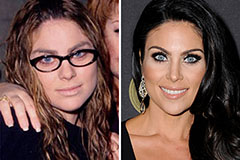What Does Uv/vis Do?
Table of ContentsUv/vis Fundamentals ExplainedNot known Facts About Circular DichroismGetting My Uv/vis To WorkUv/vis/nir Fundamentals ExplainedSome Known Incorrect Statements About Uv/vis/nir Some Ideas on Uv/vis You Need To KnowNot known Facts About SpectrophotometersUv/vis/nir Things To Know Before You BuySpectrophotometers Can Be Fun For EveryoneThings about Circular DichroismThe 4-Minute Rule for Uv/vis/nirWhat Does Spectrophotometers Mean?Uv/vis/nir Fundamentals Explained
It is then scanned through the sample and the referral services. Fractions of the incident wavelengths are sent through, or shown from, the sample and the recommendation. Electronic circuits convert the relative currents into linear transmission portions and/or absorbance/concentration values.The transmission of a reference compound is set as a baseline (datum) worth, so the transmission of all other substances are taped relative to the preliminary "zeroed" substance. The spectrophotometer then transforms the transmission ratio into 'absorbency', the concentration of specific parts of the test sample relative to the initial substance.
Given that samples in these applications are not readily offered in big quantities, they are specifically suited to being analyzed in this non-destructive technique. In addition, precious sample can be saved by making use of a micro-volume platform where just 1u, L of sample is needed for complete analyses. A short description of the treatment of spectrophotometry consists of comparing the absorbency of a blank sample that does not include a colored compound to a sample that consists of a colored substance.
Uv/vis Things To Know Before You Get This
In biochemical experiments, a chemical and/or physical property is picked and the treatment that is used specifies to that home in order to derive more info about the sample, such as the quantity, pureness, enzyme activity, etc. Spectrophotometry can be utilized for a variety of methods such as identifying optimum wavelength absorbance of samples, determining ideal p, H for absorbance of samples, determining concentrations of unidentified samples, and figuring out the p, Ka of numerous samples.: 21119 Spectrophotometry is likewise a useful process for protein purification and can likewise be utilized as a technique to produce optical assays of a substance.
It is possible to know the concentrations of a 2 element mix utilizing the absorption spectra of the standard services of each component. To do this, it is required to understand the termination coefficient of this mix at 2 wave lengths and the termination coefficients of services that consist of the known weights of the two parts.

Not known Facts About Circularly Polarized Luminescence
Region. The concentration of a protein can be approximated by measuring the OD at 280 nm due to the presence of tryptophan, tyrosine and phenylalanine.
This approach requires a spectrophotometer capable of measuring in the UV region with quartz cuvettes.: 135 Ultraviolet-visible (UV-vis) spectroscopy involves energy levels that excite electronic shifts. Absorption of UV-vis light excites molecules that are in ground-states to their excited-states.
These curves can be utilized to test a brand-new batch of colorant to check if it makes a match to specs, e
Traditional visible standard spectrophotometers can not detect if a colorant or the base material has product. This can make it challenging to manage color concerns if for example one or more of the printing inks is fluorescent. There are two significant setups for visual spectrum spectrophotometers, d/8 (spherical) and 0/45.
Scientists use this instrument to measure the quantity of substances in a sample. If the compound is more focused more light will be soaked up by the sample; within little ranges, the Beer, Lambert law holds and the absorbance in between samples vary with concentration linearly. In the case of printing measurements 2 alternative settings are frequently utilized- without/with uv filter to control much better the impact of uv brighteners within the paper stock.
Fascination About Circular Dichroism
Some applications require small volume measurements which can be carried out with micro-volume platforms. As described in the applications area, spectrophotometry can be utilized in both qualitative and quantitative analysis of DNA, RNA, and proteins. Qualitative analysis can be used and spectrophotometers are used to tape-record spectra of compounds by scanning broad wavelength regions to identify the absorbance homes (the strength of the color) of the substance at each wavelength.

Uv/vis - An Overview
One major aspect is the kind of photosensors that are available for different spectral regions, but infrared measurement is also tough because virtually everything discharges IR as thermal radiation, especially at wavelengths beyond about 5 m. Another complication is that quite a few materials such as glass and plastic absorb infrared, making it incompatible as an optical medium.
Samples for IR spectrophotometry may be smeared between two discs of potassium bromide or ground with potassium bromide and pressed into a pellet. Where liquid options are to be determined, insoluble silver chloride is utilized to build the cell. Spectroradiometers, which operate nearly like the noticeable region spectrophotometers, are designed to measure the spectral density of illuminants. Retrieved Dec 23, 2018. Essential Laboratory Techniques for Biochemistry and Biotechnology (Second ed.). The vital guide to analytical chemistry.
Chichester, NY: Wiley. pp. 1617. ISBN 9780471974123. OCLC 36543293. Ninfa AJ, Ballou DP (2004 ). Fundamental laboratory approaches for biochemistry and biotechnology. Hoboken: Wiley. p. 66. ISBN 9781891786006. OCLC 633862582. Rendina G (1976 ). Philadelphia, PA: W. B. Saunders Business. pp. 46-55. ISBN 0721675506. OCLC 147990. Oke, J. B.; Gunn, J. E.
What Does Uv/vis Mean?
"Secondary standard stars for outright spectrophotometry". The Astrophysical Journal. 266: 713. Bibcode:1983 Ap, J..266..713 O. doi:10. 1086/160817. Ishani, G (2006 ). "The first commercial UV-vis spectrophotometer". p. 100. Obtained Dec 23, 2018. Simoni, RD; Hill, RL; Vaughan, M; Tabor, H (Dec 5, 2003). "A Timeless Instrument: The Beckman DU Spectrophotometer and Its Developer, Arnold O.
278 (49 ): e1. doi:. ISSN 1083-351X. Beckman, A. O.; Gallaway, W. S.; Kaye, W.; Ulrich, W. F. (March 1977). "History of spectrophotometry at Beckman Instruments, Inc". Analytical Chemistry. 49 (3 ): 280A300A. doi:10. 1021/ac50011a001. "Hewlett Packard: Compound Recognition with HP 8450 A UV Noticeable Spectrophotometer". Analytical Chemistry. 51 (12 ): 1188A1189A. 1979-10-01.
1021/ac50048a728. ISSN0003-2700. Ninfa AJ, Ballou DP, Benore M (2015 ). Essential Laboratory Methods for Biochemistry and Biotechnology (3, rev. ed.). Hoboken, NJ: Wiley & Sons. p. 77. ISBN9780470924525. OCLC915641828. "Totally Automatic Double Beam - Atomic Absorption Spectrophotometer (AA 8000)". Lab Devices. Labindia Analytical Instruments Pvt. Ltd. "Spectrophotometry Applications and Principles".
3 Simple Techniques For Spectrophotometers
Obtained Jul 4, 2018. Trumbo, Toni A.; Schultz, Emeric; Borland, Michael G.; Pugh, Michael Eugene (April 27, 2013). "Applied Spectrophotometry: Analysis of a Biochemical Mix". Biochemistry and Molecular Biology Education. 41 (4 ): 24250. doi:10. 1002/bmb. 20694. PMID 23625877. (PDF). www. mt.com. Mettler-Toledo AG, Analytical. 2016. Recovered Dec 23, 2018. Cortez, C.; Szepaniuk, A.; Gomes da Silva, L.
"Exploring Proteins Purification Techniques Animations as Tools for the Biochemistry Mentor". Journal of Biochemistry Education. 8 (2 ): 12. doi:. Garrett RH, Grisham CM (2013 ). Biochemistry. Belmont, CA: Cengage. p. 106. ISBN 978-1133106296. OCLC 801650341. Vacation, Ensor Roslyn (May 27, 1936). "Spectrophotometry of proteins". Biochemical Journal. 30 (10 ): 17951803. doi:10. 1042/bj0301795.
PMID 16746224. Hermannsson, Ptur G.; Vannahme, Christoph; Smith, Cameron L. C.; Srensen, Kristian T.; Kristensen, Anders (2015 ). "Refractive index dispersion picking up utilizing a variety of photonic crystal resonant reflectors". Applied Physics Letters. 107 (6 ): 061101. Bibcode:2015 Ap, Ph, L. 107f1101H. doi:10. 1063/1. 4928548. S2CID 62897708. Mavrodineanu R, Schultz JI, Menis O, eds.
Circular Dichroism Fundamentals Explained
U.S. Department of Commerce National Bureau of Standards special publication; 378. Washington, D.C.: U.S. National Bureau of Standards.
The process starts with a regulated light that brightens the examined sample. When it comes to reflection, as this light interacts with the sample, some is absorbed or produced. The released light journeys to the detector, which is evaluated, quantified, and presented as industry-standard color scales and indices.
Industry governing bodies generally define specific metrics for a knockout post specific products, such as Tomato and Coffee indices. The streamlined math appears like this: Where R is the reflection coefficient. All terms are examined over the noticeable spectrum from 400 to 700 nm. In the case of transmission, when the light engages with the sample, it is either taken in, reflected, or transmitted.
The Only Guide to Uv/vis/nir
Examples include APHA (American Public Health Association) for watercolor and purity analysis, ASTM D1500 for petrochemical color analysis, edible oil indices utilized in food, and color analyses of beverages. The simplified mathematics appears like this:. Where T is the transmission coefficient. All terms are examined over the noticeable spectrum from 400 to 700 nm.
Image Credit: Matej Kastelic/ Dr. Arnold J. Beckman and his coworkers at the National Technologies Laboratories first invented the spectrophotometer in 1940. In 1935 Beckman founded the company, and the discovery of the spectrophotometer was their most ground-breaking invention. Dr. Bruce Merrifield, a Nobel prize-winning biochemist, mentioned that the creation of the spectrophotometer was "probably the most crucial instrument ever established towards the development of bioscience." Before the discovery of the spectrophotometer, chemical analyses took weeks to complete, with 25% accuracy.
Uv/vis Can Be Fun For Anyone
Over time, scientists kept enhancing the spectrophotometer design to boost its efficiency. The UV capabilities of the model B spectrophotometer were enhanced by replacing the glass prism with a quartz prism.
Normally, a spectrophotometer is made up of two instruments, particularly, a spectrometer and a photometer. A basic spectrophotometer consists of a light source, a monochromator, a collimator for straight light beam transmission, a cuvette to place a sample, and a photoelectric detector.
The smart Trick of Spectrophotometers That Nobody is Talking About
There are different kinds of spectrophotometers in various shapes and sizes, each with its own purpose or performance. A spectrophotometer identifies just how much light is reflected by chemical elements. circular dichroism. It determines the difference in light intensity based upon the overall amount of light introduced to a sample and the quantity of beam that goes through the sample option
As per the instrument's design, the sample is positioned between the spectrometer and the photometer. After the light is gone through the sample, the photometer determines its intensity and shows the reading. A spectrophotometer is used to figure out the concentration of both colorless and colored solutes in a service. This instrument is used to identify the rate of a response.
 Alicia Silverstone Then & Now!
Alicia Silverstone Then & Now! Ross Bagley Then & Now!
Ross Bagley Then & Now! Brandy Then & Now!
Brandy Then & Now! Nancy Kerrigan Then & Now!
Nancy Kerrigan Then & Now! Nadia Bjorlin Then & Now!
Nadia Bjorlin Then & Now!